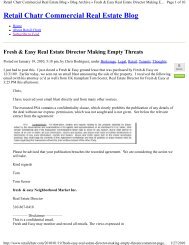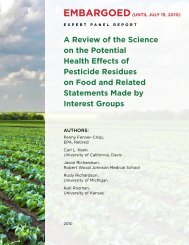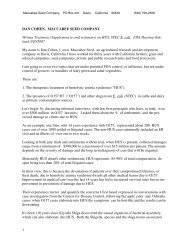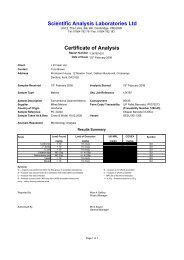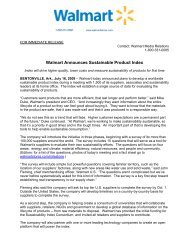6 8The coiled, leather-covered basket used bydesert dwellers for milking camels is lightweightand unbreakable, typifying the requirement forportability that underlies all Bedouin craftsmanshipYoung girls from a Bedouin family worktogether to braid the ends of a rugwoven by their mother.desert and display the weavers' ingenuity indepicting the world around them. Sources ofinspiration for designs include spindles and otherDATE PALMS AND SOUKS:OASIS TOWNS OF THE INTERIORweaving tools, kohl containers, combs, goats,Oasis town settlements bring litelizards, hud tracks, and the camel itself; mostand au unexpectedtableau of green to alandscape thathave been passed down from mother to daughterfor untold centuries. Other designs, such asscissorsand helicopters, are evidence of creativeinvention by new generations of weavers andisotherwise desolate and brown. The largestof these towns are characterized by elaboratesystems of defense that incorporate vvatchtowers,perimeter walls, fortified gates, and massive,illustrate the dynamic nature of crafts as avehicletor expression.multi-towered fortresses. These protect inhabitantsand the sources of water vitalto settlementOn the fringes of the desert are bustlingand the extensive cultivation of date palms.oasis towns where Bedouin lifestyleoverlapsThe date palm is, without question, thewith that of settled communities. Despitetheir allegiance to the desert, Oman's Bedouincommunities do, of necessity, maintain stronglinks to these towns. They make periodic visitsmost versatile of Oman's natural resources,and tor good reason it is known throughoutthe Arab world asthe "tree of life." Beyondits obvious value as a provider of food,to sellshelter, and fuel, it is the greatest source otlivestock, tribal rugs and trappings, desertpalmbasketry and other Bedouin products, andcraft material in the country. It has usefulapplications in seafaring, fishing, tanning.to purchase the work of market-based silverandcoppersmiths, silkweavers, embroiderersherding, trading, and general housekeeping.and other town-dwelling artisans, main ofwhom cater specifically to a Bedouin clientele.Virtually every part of the date palm isutilized by artisans. Leaflets are plaited intoSMITHSONIAN FOLKLIFE FESTIVAL
long strips and joined to make mats, baskets, and food covers.Fibrous material found at the base ot fronds is plied into rope andused to cushion loads on donkeys and camels. The central ribsof fronds are made into clothing fumigators or bird traps, or arelashed together to form panels for constructing dwellings, workshops,and livestock enclosures. Date stalks are split and made intorigid containers, while the dates themselves are added to indigodye vats and leather tanning solutions. Sharp spines projectingfrom the sides of fronds are used as needles by embroiderers. Trunksections are hollowed out to make cattle troughs, mortars, andbeehives, or cut lengthwise into quarters and used as ceiling beams.Any surplus material can be used by potters for tiring pottery.A focus of most oasis towns is the souk (marketplace), whichserves as a base for both the production and marketing of crafts.Carpenters, silversmiths, coppersmiths, and blacksmiths typically havepermanent workshops within the souk itself, while leather crattersset up temporary sunshades under whichthey work and offer leather goods for sale.The indigo dyers of Bahla, among the lastin the Arab world to use natural indigo,continue to work in traditional workshopswith large dyeing vats set into earthenfloors and dyed fabric drying on the rooftops.Souk-based crafts are characterizedby a high degree ot specialization andare typically learned through apprenticeship.Those artisans who work outside thesouk — potters, basket makers, weavers ofcamel and donkey trappings, and rose-waterproducers—sell their finished goods inthe souk directly or through middlemen.Artisanal communities in oasis townsdepend upon and support each other. Forinstance, leather tanners and indigo dyersuse earthenware vats made by potters.Large copper cauldrons are used formaking halwa, which is packaged in palmbaskets, and also tor distilling rose water,which is collected in other copper vesselsand poured from highly ornate silversprinklers. The workshops of carpenters,silversmiths, and potters abound withpalm-frond mats and hand-forged irontools, creating webs ot exchange amongcraftspeople that help maintain the viabilityof traditional artisanry in oasis towns.The date palm is,without question,the most versatileof Oman's naturalresources, and forgood reason itisknown throughoutthe Arab world as,,the "tree oí liíe.[69]OMAN DESERT, OASIS, AND SEA
- Page 1:
Smithsonianolklife Festival\Food Cu
- Page 4 and 5:
The annual Smithsonian Folklite Fes
- Page 7 and 8:
—CONTENTSThe Festival's Timely Ap
- Page 9 and 10:
—THE FESTIVAL'S TIMELY APPEALLAWR
- Page 11 and 12:
COMMERCE FOR CULTUREFrom the Festiv
- Page 13 and 14:
[ii]The food concession for the Mel
- Page 15 and 16:
oMiiitbioni.indotal SoundL04.A 1 Sl
- Page 17:
1WELCOME TO THE 2005 FOLKLIFE FESTI
- Page 20 and 21: Workers harvest artichokes at Ocean
- Page 22 and 23: —assigned aparticular dish—meat
- Page 24 and 25: I--IPot Pie Farm manager Elizabeth
- Page 26 and 27: ISustainable farmers such as Eliot
- Page 28 and 29: "IThe numberof programsdesignedfor
- Page 30 and 31: .hadSALAD GREENS WITH GOAT CHEESE,
- Page 32 and 33: w.A>wm:~
- Page 34 and 35: —3 3]OCCUPATIONAL CULTUREThe 2005
- Page 36 and 37: employees, the USDA Forest Servicei
- Page 38 and 39: I[3 6]page book, which could fit in
- Page 40 and 41: ká.!i- .>!mKPA backpacker sets up
- Page 42 and 43: --^i'liunterw eight jihI ...itl jib
- Page 44 and 45: —4-"The essentialpiece isto captu
- Page 46 and 47: I44cutDUTCH OVENONE-POT MEALThomas
- Page 48 and 49: —FUTURE CONCERNS FOR PUBLIC LANDS
- Page 50 and 51: NUESTRA MÚSICA: MUSIC INBuilding C
- Page 52 and 53: plena groups throughout the Northea
- Page 54 and 55: NUESTRA MÚSICA LAUNCHES NEW SERIES
- Page 56 and 57: NUESTRA MÚSICA: MUSIC IN LATINO CU
- Page 58 and 59: "ILos Camperos de Valles son músic
- Page 60 and 61: RAICES LATINASNUESTRA MÚSICA LANZA
- Page 63 and 64: IOMAN: DESERT, OASIS, AND SEARICHAR
- Page 65 and 66: DESERTThe deserts ot the Arabian Pe
- Page 67 and 68: THE FESTIVAL PROGRAMThe 200s Smiths
- Page 72 and 73: 70]COASTAL CRAFTSMANSHIPAND GLOBAL
- Page 74 and 75: [72]Although the oldismaking way fo
- Page 76 and 77: AN OMANI FOLKTALEASYAH AL-BUALYOman
- Page 79 and 80: y%aMUSIC AND DANCE INOMANOMAN CENTR
- Page 81: In the southern Dhufar region, al-b
- Page 84 and 85: ecosystems, identification of plant
- Page 86 and 87: 2:00IIIVorkshopFESTIVAL SCHEDULE (P
- Page 88 and 89: Rhythm,Saturday, June 25 (Programs
- Page 90 and 91: )avidi nestMonday, June 27(Programs
- Page 92 and 93: 1:00IIlamFriday, July 1 (Programs a
- Page 94 and 95: )utchSunday, July 3(Programs are su
- Page 96 and 97: EVENING CONCERTSSounds of the Fores
- Page 98 and 99: theRELATED EVENTS[96]Nuestra Músic
- Page 100 and 101: IIDónalas Anderson,Washington, D.C
- Page 102 and 103: 'IEd LiíDmi, Studio City, Californ
- Page 104 and 105: ISudhir Seth, Bethesda, MarylandA g
- Page 106 and 107: 1 if 1 DumberHoneyBeehive Beeproduc
- Page 108 and 109: 1"''NewI >onI Lui\IDon Bustos,Espa
- Page 110 and 111: Ian Barlow, White Bird,Idaho; Woodl
- Page 112 and 113: I 'istnet1Gordon Grant,Corvallis, O
- Page 114 and 115: Kristen Marline, Flagstaff,Arizona;
- Page 116 and 117: I1 ountries,IIHistorie Site, once t
- Page 118 and 119: 1IworksI1 11Istations are vital to
- Page 120 and 121:
1'IenIpanderetas;JCJ Band. Washingt
- Page 122 and 123:
Ralph Rinzlersongs are "made" (or c
- Page 124 and 125:
I >cmseI VhorahII MiI lameEne Nance
- Page 126 and 127:
|i 2forIIBartlevy1 )oerr;IIParadeSP
- Page 128 and 129:
II AerialIIII1Washington and Jeffer
- Page 130 and 131:
Stack, Bill Stafford, loni Stafford
- Page 132 and 133:
SMITHSONIAN FOLKLIFE FESTIVAL 20051
- Page 135 and 136:
SMITHSONIAN FOLKLIFE FESTIVAL 2005B
- Page 138:
Smithsonian Folklife FestivalSMITHS



